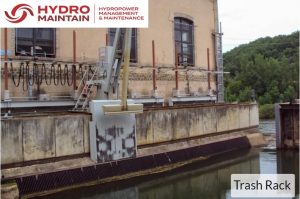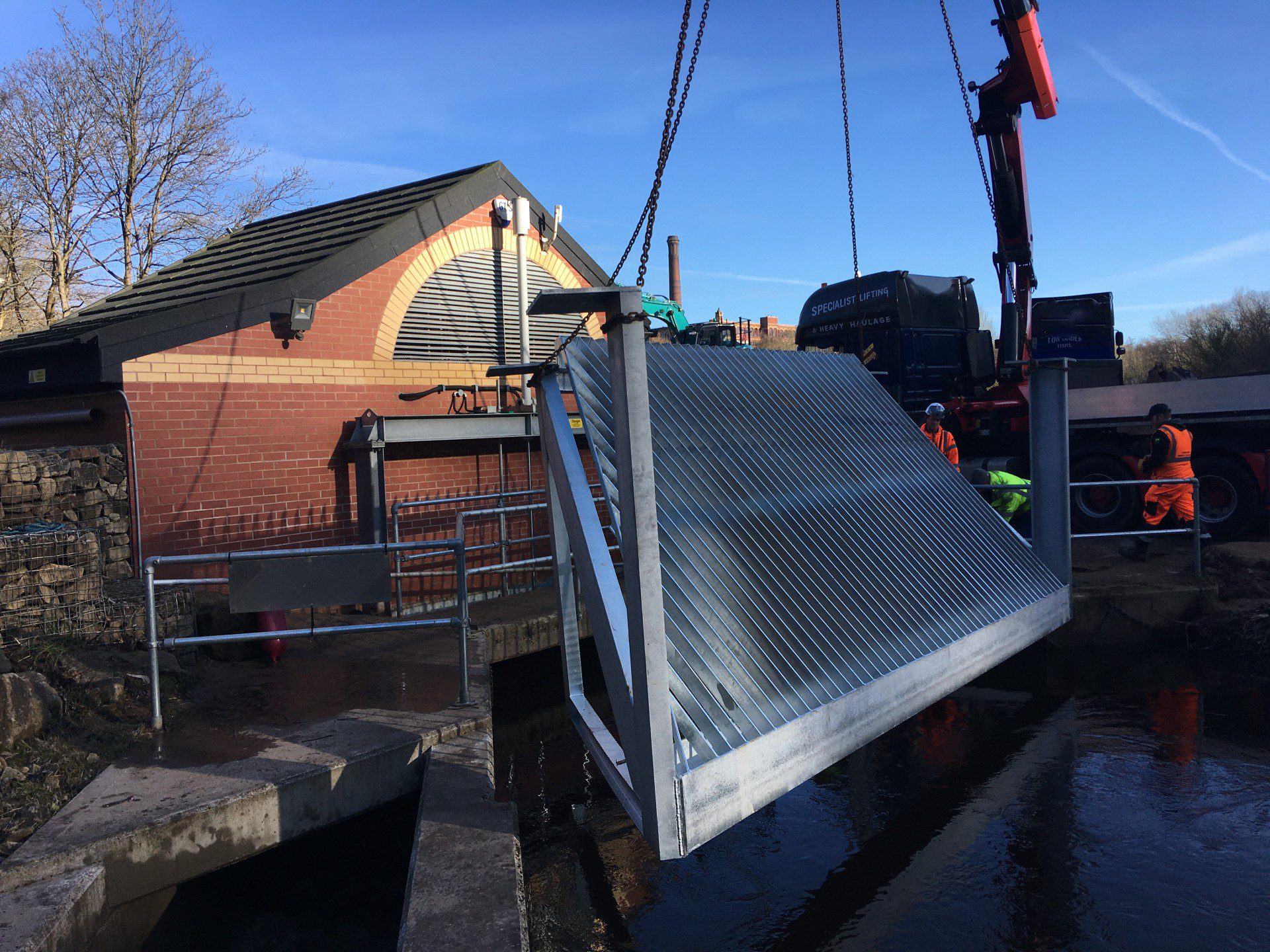Trash screens play an important role in any hydropower system. They prevent rubbish, branches and other natural debris from moving downstream, where they can cause damage and prevent generation.
For any owner of a hydropower plant, trash rack cleaning is part of the regular maintenance schedule. Items lodged at the trash rack can pose a threat to reliability, whilst the accumulation of dirt, sediment or algae decreases flow to the turbine, leading to reduced energy generation. Research has shown that debris can account for approximately 50% of the total head loss at the trash rack [1]. Keeping the trash rack clean minimises downtime and maximises generation.
To assist in trash rack maintenance, Hydro Maintain suggests the following tips:
● Ensure you have the right tools on site. Trash racks may extend far below the water and be difficult to access. An extendable rake which reaches to the trash rack’s bottom will ensure that you can remove all of the material quickly, and without needing to get in the water! For our own hydropower maintenance projects we have two different sized rakes – one to tackle leaves and the other to handle heavier bulkier items. This can often save your back and broken rakes.
● Be aware that rainfall and falling leaves or branches bring more debris into rivers. Plan for more frequent trash rack inspection during the autumn and winter months and also after heavy rainfall.
● Carefully inspect and deep clean your trash rack on an annual basis. Pay close attention to bar spacing to ensure that larger debris cannot get into the system. Pressure washing can remove build ups of silt and algae that reduces flow through the trash rack. Hydro Maintain can deliver this service for you.
● Occasional shut-down & backwash. This can help to release items stuck at the bottom of the screen. An auto backwash can be programmed into the control system when sensors indicate a blockage.
For plant owners wanting to maximise plant output or optimise the maintenance schedule, there are a number of options available. CCTV and head level sensors allow remote monitoring of trash racks, which is particularly important if they are difficult to get to. CCTV allows the users to see when large pieces of debris have become stuck. Head level sensors located upstream and downstream of the track rack can help to identify when the rack may be blocked. Research has demonstrated that numerical data like this could be used to halve the number of times a trash rack is cleaned, whilst maintaining the same energy output over the whole year [2].
For owners of larger schemes, mechanical trash rack cleaners can be used for remote and automatic cleaning. There are numerous systems including moving racks and hydraulic-actuated arms that are effective for a range of different civil layouts. For owners of medium or high head schemes, a special type of trash rack, the Coanda screen, is a viable alternative. As water passes over a Coanda screen, the required flow passes through with the remaining water flowing over the screen. This has a self-cleaning effect minimising the build-up of debris on the screen. For remotely located hydropower schemes, the Coanda screen offers excellent reliability and low maintenance.
For low head hydropower projects the trash can become quite a collection of oddments. From gas tanks, perambulators, enough footballs for an entire team and the worst of all those 1 Tonne dumpy sacks which stick like glue and crucify power output.
 We’ve redesigned, fabricated and installed many trash screen solutions with vast improvements in down time reduction seen and ease of use – just from a few simple design tweaks. The go-to guide is the Environment Agency’s Trash Screen Guide 2009 which covers all ranges of screens, design options, good practice and more hydro maintenance tips.
We’ve redesigned, fabricated and installed many trash screen solutions with vast improvements in down time reduction seen and ease of use – just from a few simple design tweaks. The go-to guide is the Environment Agency’s Trash Screen Guide 2009 which covers all ranges of screens, design options, good practice and more hydro maintenance tips.
Regardless of the size of the hydropower scheme, keeping the trash rack clean is vital in minimising downtime and maximising generation.
Please contact Hydro Maintain for any assistance in developing maintenance schedules, carrying out annual maintenance cleaning or upgrading your trash rack system. Call us on 0330 1331 5555 or send an email to enquiries@hydromaintain.com.
References
[1] Meusburger, H. “Energy losses at the inlet screen of river power plants.” PhD thesis. ETH-Zurich, Zurich. (2002)
[2] Hribernik, A. “Evaluation of Clogged Hydropower Plant Trash Rack Losses.” Strojniski Vestnik/Journal of Mechanical Engineering 66, no. 2 (2020).



